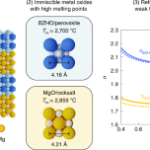2022-09-08 アメリカ合衆国・ワシントン州立大学(WSU)

・ WSU が、人工の火星岩粉とチタン合金を組み合わせた、強靱で高性能な複合材料を使った 3D プリント技術を開発。将来的にツールやロケット部品のオンサイト作製の可能性が期待できる。
・ 例えば、地球周回軌道に向けた NASA のスペースシャトルへの 1kg のペイロード積載には約 5 万 4千ドルもの高いコストがかかり、荷物の増量や忘れ物を取りに戻ることができない。宇宙や惑星でのオンサイトでの部品作製や修理が可能になれば、コストや重量を節約できる。
・ WSU では、月の人工表層土を使用した部品の 3D プリント作製を 2011 年に NASA に向けて初めて実証。それ以降、各宇宙機関が同技術を採用している。国際宇宙ステーション(ISS)では、独自の 3Dプリンターによるオンサイトでの部品作製や実験を実施している。
・ チタン合金は、その強度と耐熱特性により宇宙探査で一般的に使用されている材料。高出力レーザーで人工岩粉とチタン合金をを 2,000℃(3,6,32℉)超に加熱して混ぜ合わせ、溶解した複合材料で多様なサイズ・形状を積層造形する。
・ 材料冷却後に部品の強度と耐久性を試験した結果、人工岩粉の混合率が 100%の部品は脆く割れやすいことを確認したが、錆や放射線による損傷から機器を保護するコーティングの役割として有用となる。一方、混合率が 5%の部品には亀裂や気泡が見られず、チタン合金のみの部品よりも優れた特性を提示。重量物を耐久する軽量な部品の作製が可能となる。
・ 今後の研究では、別種類の金属を使ったより優れた複合材や 3D プリント技術の開発を見込む。
・ 本研究は、米国立科学財団(NSF)が支援した。
URL: https://news.wsu.edu/press-release/2022/09/06/martian-rock-metal-composite-shows-potential-of-3d-printing-on-mars/
<NEDO海外技術情報より>
関連情報
International Journal of Applied Ceramic Technology 掲載論文(フルテキスト)
Martian regolith-Ti6Al4V composites via additive manufacturing
URL: https://ceramics.onlinelibrary.wiley.com/doi/10.1111/ijac.14136
Abstract
In order to investigate the in-space in situ resource utilization, directed energy deposition (DED)-based additive manufacturing (AM) has been utilized to process Martian regolith—Ti6Al4V (Ti64) composites. Here we investigated the processability of depositing 5, 10, and 100 wt% of Martian regolith premixed with Ti6Al4V using laser-based DED, analyzing the printed structure via X-ray diffraction, Vicker’s microhardness, scanning electron microscopic imaging, and wear characteristics utilizing an abrasive water jet cutter to simulate abrasive environments on the Martian surface. The results indicate that the surface roughness and hardness of the composites increase with respect to the Martian regolith’ weight percentage due to in situ ceramic reinforcement. For instance, i5-wt% addition of Martian regolith increased the Vicker’s microhardness from 366 ± 6 HV0.2 for as-printed Ti64 to 730 ± 27 HV0.2 while maintaining similar abrasive wear performance as Ti6Al4V. The results point toward laser-based AM for fabricating Ti64—Martian regolith composites with comparable properties. The study also reveals promising results in limiting the mass burden for future space missions, resulting in cheaper and easier launches.



